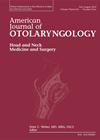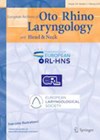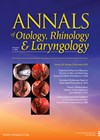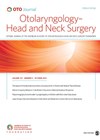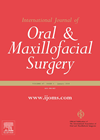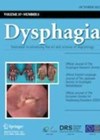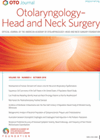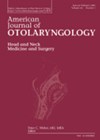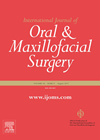
Journal Reviews
Does transoral robotic surgery improve outcomes among patients with head and neck cancer of unknown primary?
A tonsillectomy and tongue base mucosectomy is becoming increasingly accepted as the optimal surgical intervention to aid in identifying the primary source of a p16+ / HPV-related squamous cell carcinoma (SCC) of unknown origin, given that this disease almost exclusively...
Organoids in otolaryngology
This interesting review article summarises the status as well as future prospects of organoid technology in our field. Organoids are a mass of cells which are typically cultured in vitro with 3D technology. They simulate miniature tissues and organs and...
Is Gamma Knife Surgery effective for intracanalicular vestibular schwannomas?
Vestibular schwannomas (VSs) are rare, occurring in approximately five per 100,000 adults a year. In circa 8% of cases, the VS is contained within the internal auditory canal, i.e. intracanalicular (iVS). Although radiosurgery is a recognised treatment modality for VSs,...
Does middle turbinate resection affect olfaction in endoscopic transsphenoidal surgery?
The middle turbinates (MT) are sometimes partially resected during endoscopic transnasal transsphenoidal pituitary surgery to improve surgical access. Some outfracture the middle turbinates instead. This article presents results of the first prospective randomised study, investigating the effects of such surgery...
Relapse after bi-maxillary surgery in a class III malocclusion
This study analysed 90 patients who underwent a bi-maxillary osteotomy for a class III malocclusion. There were 30 in each of three groups of patients based upon the Frankfort mandibular plane angle (FMA). They were divided into: greater than 32°,...
How common is dysphonia and dysphagia after cardiac surgery?
Patients undergoing cardiac surgeries, such as coronary artery bypass (CABG) and valve operations, are usually informed that there may be some risk of laryngeal complications that could result in a dysphonia or dysphagia. This may be due to factors including...
REVISIONS acronym for preoperative imaging review in revision endoscopic sinus surgery
The authors have developed an acronym to aid evaluation of preoperative sinus CT imaging in revision endoscopic sinus surgery (RESS). To determine which pertinent aspects of anatomy to include, a systemic review of studies that investigated anatomic contributions to persistent...
Does endoscopic sinus surgery for chronic rhinosinusitis improve COPD?
Chronic rhinosinusitis (CRS) can be associated with asthma, with a reported frequency of asthma in patients with CRS of up to 44%. COPD is another lung condition that can be associated with CRS. This longitudinal study reviewed the nasal and...
Wisdom teeth and mandibular osteotomies
This is a systemic review and meta-analysis from Italy and Brazil where they try to clarify the role of wisdom teeth and complications in a sagittal split mandibular osteotomy. Whilst, like many other papers, they outline the quality of evidence...
Effects on the nasal cavity and maxillary sinus after a Le Fort I osteotomy
This paper from Turkey divided 28 patients into three groups: those having a maxillary advancement osteotomy, those with a maxillary advancement and impaction, and those that underwent advancement with a yaw rotation. They found that pure advancement movement of the...
Reducing nasal changes in SARPE
This paper from Belgium highlights completing a sub-spinal cortectomy of the anterior nasal spine during the procedure of surgically assisted rapid palatal expansion (SARPE) as a means of reducing the alar and columella width as well as the nasolabial angle....
Piezoelectric saw reducing sensory disturbance in mandibular osteotomies
This paper from Seattle in the United States looked at 20 patients with a mean age of 19.9 +/- 3.2 years with a fairly standard surgical movement. They found that functional sensory recovery of the inferior alveolar nerve resulted in...

